
None of the hundreds of refugees in the holds of our ship had any idea that when they put down their tired heads at night they were only inches away from the ammunition we carried. We still had a grenade in the breech of our gun. We asked approval from the authorities to remove this at a distant sandbar in the mouth of the river. Everybody who wanted to see and hear this show came to witness it. A large fountain of sand meant for everybody on board, specially the crew, that the nerve racking journey through the waters of the Dutch East Indies was at an end.
We had been very lucky. Off the twenty four ships that had left Tjilatjap with us, only thirteen arrived at their destination! The future of the survivors of those sunken ships was very uncertain, particularly if they had been picked up by the Japanese.
Yes, we were lucky indeed, even though we did not realize this at first.
 After having lived on board ship for three months Perth was a welcome change. The city was completely lit-up in the evening, as well as at night. That was unique after two years of war. What we noticed more than anything when walking through the city were the women and young girls. Just imagine, on board we had been looking at the same faces for far too long. This was proof that there was still something beautiful in this world. They were indeed a sight for sore eyes. How unusual that one has to re-discover this again? Then there were those beautifully lit up shops where one could really buy anything you could possibly need. What a difference with England. It seemed that everything here smelled nicer. The sun shone more beautifully than anywhere else in the world and even the food on board tasted better than ever. Even my bed was softer and I slept like a log. As the days wore on I changed. You could say I became a “normal†person again.
After having lived on board ship for three months Perth was a welcome change. The city was completely lit-up in the evening, as well as at night. That was unique after two years of war. What we noticed more than anything when walking through the city were the women and young girls. Just imagine, on board we had been looking at the same faces for far too long. This was proof that there was still something beautiful in this world. They were indeed a sight for sore eyes. How unusual that one has to re-discover this again? Then there were those beautifully lit up shops where one could really buy anything you could possibly need. What a difference with England. It seemed that everything here smelled nicer. The sun shone more beautifully than anywhere else in the world and even the food on board tasted better than ever. Even my bed was softer and I slept like a log. As the days wore on I changed. You could say I became a “normal†person again.
While we were in Perth we installed a couple of ‘Oerlikon’s’ anti-aircraft cannons on the bridge. Why call them ‘cannons’? They fired very heavy bullets into the air at the rate of a machine gun. It was a very dependable Swiss made piece of work.
PK: according to gunner Walter MacNab these Oerlikons had been put on the ship before it left England and not only in Fremantle.
After the cargo was unloaded at last (thank heaven’s!!) we were directed to Bunbury. Where on earth was Bunbury? Even the most travelled on board had never heard of it and shrugged their shoulders. It turned out that it was about two hundred kilometres south of Perth.
<< previous chapter —————————————————————-next chapter >>

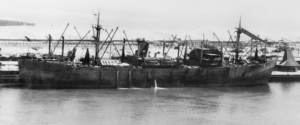
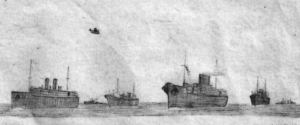
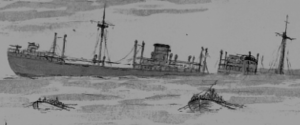
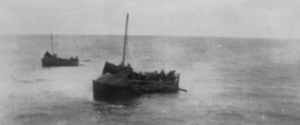
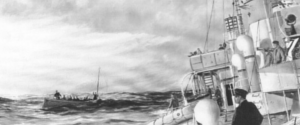
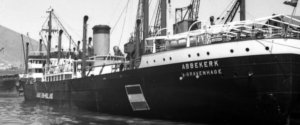




Taken from http://www.fremantleports.com.au/About/OurHistory/1942.asp
In the following month after Singapore had fallen to the enemy, vessels crowded with refugees
arrived at Fremantle, taxing accommodation to the utmost in the inner harbour, whilst as many as 30 took up all anchorage in Gage Roads. In the inner harbour, it was, therefore, a common sight to see up to as many as four vessels of substantial size lying in tier, and it was due solely to the circumstances forced upon the port and the prevailing weather conditions that such a state of affairs could be permitted. Altogether, some 75 vessels were using the inner and outer harbours at one and the same time, and in the fortnight ending 20th March, a total of 103 vessels, Naval and merchant, and mainly seeking refuge, arrived at the port. Until these vessels could be ordered to some other destination, acute conditions persisted at the port for some weeks.